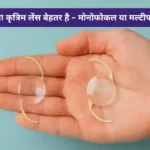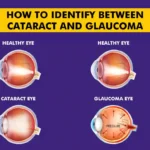SMILE (Small incision lenticule extraction) is a Laser vision correction beyond LASIK, a step towards flapless, minimally invasive laser correction.
SMILE eye surgery combines state-of-the-art femtosecond technology with high-precision lenticule extraction aiming at providing minimally invasive refractive correction in a single system. A refractive lenticule is created in the intact cornea and removed via a small incision producing no ablation and no flap.With the introduction of SMILE, the treatment has become a lot easier and faster.
The principle itself is revolutionary. In contrast to other techniques such as LASIK, it is no longer necessary to fold back the cornea. There is no flap incision; the area of the incision is reduced to a minimum, and the outer corneal layers remain more or less intact. All of this is made possible by a sensitive, precise and convenient treatment method.
Advantages of SMILE over LASIK
- It is safer and more stable than LASIK procedure as SMILE preserves the Corneal Biomechanics i.e.anterior portion which is the strongest part of the cornea- is untouched and hence preserved.
- Earlier rehabilitation process –
- one can even get away by rubbing eyes the next day, go swimming, sports in a few days, all such activities which one can do only a month after LASIK.
- Corneal sensitivity is unaffected in SMILE procedures.
- As flaps get thicker, LASIK treated eyes get weaker, this does not happen with SMILE as there is no flap.
- It can treat higher powers (above -6.00D) more safely than LASIK.
- It reduces the risk of corneal ectasia which is a serious disadvantage of LASIK.
- SMILE represents the beginning of a new era in refractive surgery, on the grounds of its significant advantages in terms of the patient’s comfort.
- It also makes vision correction available to people who would have previously been told that they were unsuitable candidates.
The major advantage of SMILE is that there is no flap cutting. Without the potential for spherical aberration, patients treated using the smile technique are more likely to achieve better quality of vision than patients treated with an excimer laser. This is especially true for those with high myopia.
SMILE may also offer better biomechanical stability than procedures employing flap creation, along with less postoperative discomfort and a lower incidence of dry eye. With no potential for flap displacement, even after trauma, smile is the best procedure for those who are involved in contact sports.
Article: SMILE Versus LASIK
Author: Dr Mukesh Sharma | Jan 11 2017 | UPDATED 02:00 IST
*The views expressed here are solely those of the author in his private capacity and do not in any way represent the views of Centre for Sight.





